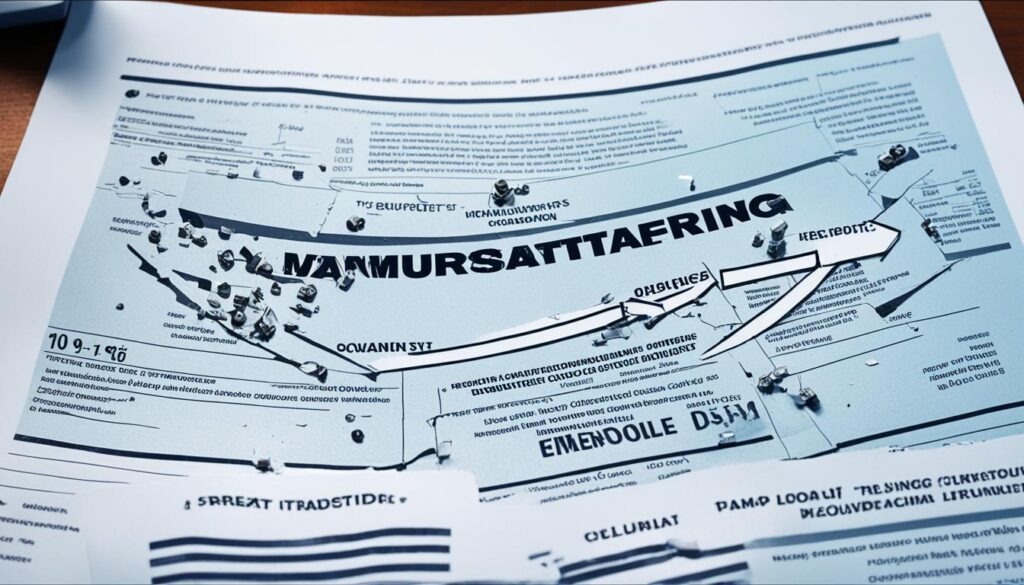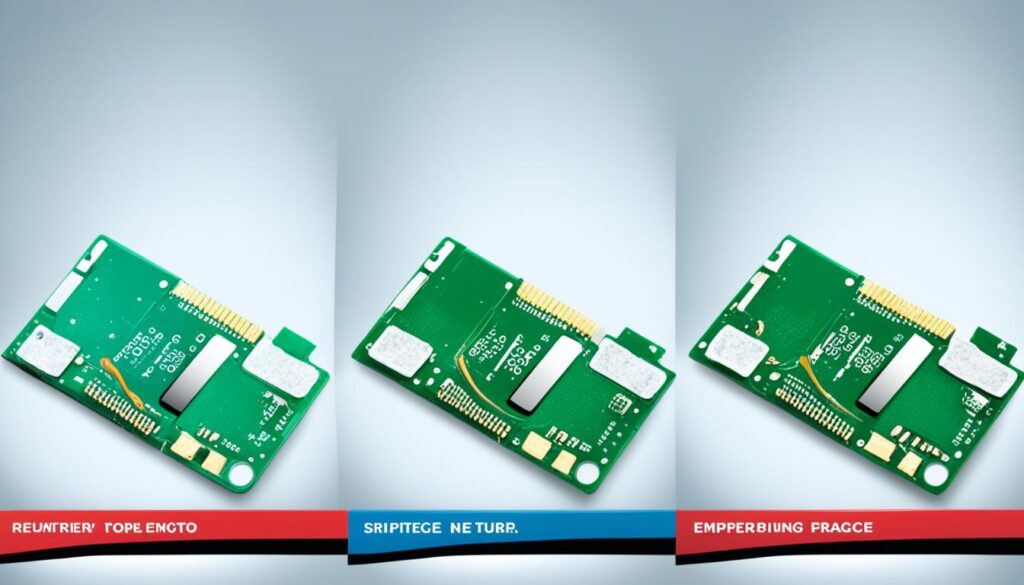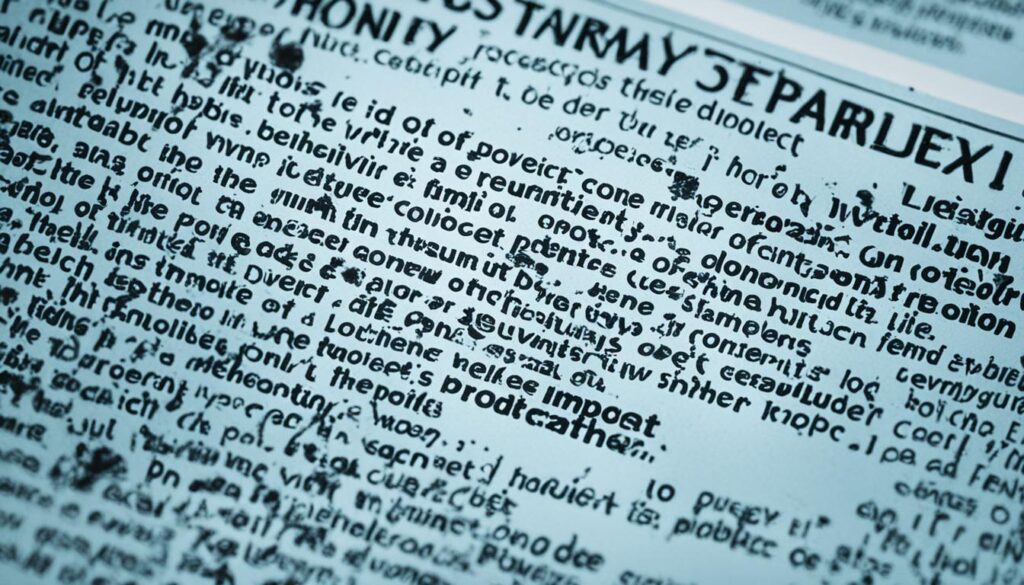Product liability affects many businesses. Liability insurance costs are high, and laws to limit liability face hurdles. Some U.S. courts are even pushing for more liability for businesses not at fault. It’s crucial for people hurt by bad products to know their rights. They must pursue claims against the makers of defective products.

Key Takeaways:
- Product liability is a pressing concern for businesses, with liability insurance premiums and limitations on liability posing challenges.
- Individuals injured by defective products have the right to pursue product liability injury claims and hold manufacturers accountable.
- Understanding product liability and the types of product defects is crucial for successful claims.
- Strict liability plays a significant role in product liability cases, and jurisdictional issues can complicate these claims.
- Finding a balance between consumer and manufacturer responsibility is essential in addressing product-related injuries.
Read on to discover more about product liability. We’ll dive into how to make manufacturers take responsibility. Plus, we’ll explore how these claims affect both businesses and customers.
Understanding Product Liability
Product liability is a key legal concept. It makes everyone in the making process of a product accountable for any harm it causes. This group includes the maker, assembler, wholesaler, and shop owner. If a faulty product injures someone, they can ask for compensation.
There are different reasons for product liability cases. These include negligence, strict liability, or promising a product is fit for a use that it’s not. To win, one must show the product had a flaw. Plus, this flaw directly caused the injury. This is when the skills of product liability lawyers shine.
Product liability lawyers focus on these cases. They know how to deal with the tricky legal details. These lawyers assist people in collecting proof, finding who is to blame, and making a solid case.
Manufacturers and suppliers can face liability for three main types of defects:
Design flaws make a product dangerous even when used correctly. Manufacturing defects happen while making the product, affecting a few items. Marketing defects are about not giving the correct use instructions or warnings to users.
Getting a product liability lawyer’s advice helps people understand how to prove their case and get what they deserve. These lawyers study the injury’s details, collect needed proof, and create a strong case against those at fault.
The Role of Product Liability Attorneys
Product liability attorneys are crucial in these cases. They know the laws and tactics needed to prove a case. Their know-how aids those hurt by faulty products through the complex legal system, aiming for a win.
These lawyers often team up with experts who can testify about product flaws or how bad the injuries are. These witnesses help make the case stronger. The lawyers also talk with insurance companies to get a fair deal for their clients.
Overall, these attorneys are vital for those injured by defective products seeking fairness and compensation. They guide their clients through the legal aspects and fight for their rights.
Types of Product Defects
There are different types of product defects that can harm consumers. Knowing these defects is key in product liability cases. They include design defects, manufacturing defects, and marketing defects.
Design Defects
Design defects are flaws in how a product is planned. This makes the product dangerous to use. These issues happen before the product is made. They affect how safe and functional the product is. Design defects can cause serious injuries or even death. Examples are not enough safety features or using the wrong materials.
Manufacturing Defects
Manufacturing defects happen while making the product. They can cause a few items to be flawed among many good ones. These can come from errors in assembling, poor materials, or broken parts. They can make the product break or not work right.
Defects in Marketing
Marketing defects are about the product’s labels, instructions, or warnings. If a product doesn’t have clear instructions or doesn’t warn about dangers, it’s a marketing defect. This can lead to the wrong use of the product. Examples are poor warning labels or not showing known risks.
The rules for showing a design defect exists can depend on where you are. Some places require the person with the complaint to prove it. Others require the manufacturer to prove there isn’t a defect. In these legal cases, finding and showing evidence of the defect is crucial. It helps in figuring out who is at fault and getting compensation for any harm caused.
Strict Liability in Product Liability Cases
Product liability makes manufacturers answer for harm from their faulty products. It means they can be responsible for injuries, no matter their intent or how careful they were. This rule is called strict liability.
With strict liability, if a product is faulty and hurts someone, the maker can be blamed. This helps protect buyers and guarantees they get compensated for injuries from faulty products.
A product being faulty allows plaintiffs to show its benefits may be greater than its dangers. Courts might use tests like the risk-utility test or the consumer expectation test to check liability.
The risk-utility test weighs the product’s advantages against its risks. It considers how the product is used, how likely and serious the harm could be, and if there are safer options.
The consumer expectation test checks if a product is as safe as regular consumers would expect. If a product doesn’t meet these expectations and harms someone, the maker might be blamed.
It’s hard to fight liability in defective product cases, but it’s vital for injured people to get legal help. Product liability lawyers know the law well. They can make a strong case against the makers of faulty products.

Jurisdiction and Product Liability Cases
Product liability cases can get quite complex, involving people from different places. Products are made and sold in various locations, leading to legal difficulties in lawsuit filings. This complexity results in what’s known as forum shopping. Forum shopping is when plaintiffs look for courts known to favor product liability claims.
But, recent rulings have started to limit forum shopping in these cases. A key example is the Bristol-Myers Squibb Co. v. Superior Court of California, which changed the game. The Supreme Court said that nonresidents can’t sue in a state if the defendant isn’t based there or the injury didn’t happen there. This decision ties plaintiffs closer to the place they’re suing in, stopping widespread forum shopping.
Challenges in Product Liability Jurisdiction
“Dealing with different jurisdictions in product liability cases brings many challenges. Figuring out which court is right, and dealing with varied state laws, demands expertise and thoughtful strategy.”
Jurisdictional challenges in product liability cases can come from several sources:
- Where the injury happened
- The defendant’s home base or place of incorporation
- The defendant’s connections to a place
- How the product moved through different places
These issues underline why it’s crucial to have lawyers skilled in product liability law. They can deal with jurisdiction complexities and aim for the best result for plaintiffs.

The Role of Jurisdiction in Product Liability Cases
The role of jurisdiction is vital in deciding where a product liability case can be heard. Correct jurisdiction means lawsuits are filed where they have a solid legal basis. It also stops misuse of the system by preventing forum shopping, making sure there’s fairness.
Key points to think about when filing such a case include:
- Where the injury took place
- Where the product was made, designed, or sold
- The defendant’s home base
- The defendant’s dealings with various places
Considering these factors helps determine the best jurisdiction for filing product liability claims. This can significantly increase the chances of a favorable decision.
The Impact of Product Liability on Businesses and Consumers
Product injuries affect businesses and consumers greatly. Each year, millions are injured or killed due to product issues, causing huge costs. These costs are more than medical bills and victim compensation.
They also include money spent on legal cases, recalling products, and damage to reputation. This can lead to lower sales and less consumer trust.
For companies, the cost of product liability can be huge. Thousands of lawsuits are filed every year, and the legal and settlement costs can be very high. Sometimes, these costs can even lead to businesses going bankrupt or shutting down. Additionally, the cost of product injuries can raise insurance premiums, making it hard for businesses to get affordable coverage.
“The high cost of product injuries can hit both big corporations and small businesses hard. It’s important for companies to have strict quality checks. This helps avoid defective products and reduces the chance of lawsuits.”
Manufacturers feel they are unfairly blamed for injuries they couldn’t stop. They say they are often punished for accidents caused by users or unexpected situations. These companies have the tough job of proving they are not at fault in court. This can be hard, costly, and take a long time.
However, consumer activists see product liability lawsuits as key. They hold manufacturers responsible and make them focus on safety. Activists believe that companies should make safe products. If they fail, they should face financial consequences. Lawsuits help injured consumers get money for their losses and injuries.
The Consumer Perspective
Consumers see lawsuits as a way to make companies pay attention to safety. They depend on the court to make sure manufacturers are responsible for any harm. Lawsuits also give injured consumers justice. They make careless companies pay attention.
The issue of product liability is complex. Yes, injuries from products cause a lot of financial stress. But, it’s vital to protect consumers while allowing companies to grow and innovate. Finding the right balance is key and requires careful thought about laws, rules, and best practices in the industry.

To lessen the effect of product liability, it’s crucial to promote safety, support consumer rights, and encourage responsible innovation. It takes everyone working together – companies, consumers, lawmakers, and legal experts. Together, they can create rules that protect people and the marketplace.
Distribution of Costs and Responsibilities
Products can be risky. It’s vital to figure out how to split injury costs in society. Opinions differ between manufacturers and consumer advocates on who should bear the cost.
Manufacturers say consumers should take more blame for injuries. They argue that covering all costs is expensive. They want consumers to make smart choices and accept the outcome of their actions. This, they say, will push consumers to value safety more.
“Consumers play a vital role in ensuring their own safety by carefully evaluating products and using them as intended. They have the ability to make informed decisions and should accept the responsibility that comes with it.”
Some people think manufacturers should pay more for injuries. They believe it’s only fair that the party with more money covers the costs. They say producers can afford to make things safer and should do so. This keeps companies in check and pushes them to focus on safety.
“Manufacturers have a moral, ethical, and legal duty to prioritize the safety of their products. By accepting a greater share of responsibility, they demonstrate their commitment to consumer well-being and contribute to a more equitable distribution of costs.”
There are many views on who should pay for product injuries. Finding a middle ground is key. It’s about creating a system that limits injuries but is also fair to producers and helps society as a whole.
The Role of Government Regulation
The government sets rules to split the blame and costs of product injuries. Through laws, it makes sure products are safe and high-quality. Governments also make companies pay if their products cause harm. This encourages producers to care more about their consumers.
Consumer Education and Awareness
Educating people about product safety matters a lot. It helps them choose wisely and avoid danger. Teaching them to report bad products and follow safety advice helps share the costs and responsibilities better.

The Benefits and Drawbacks of Holding Manufacturers Liable
Holding manufacturers liable can lead to both good and bad outcomes. Some say it brings benefits, while others see drawbacks. It’s key to understand both sides to create a fair product liability approach.
The Benefits of Holding Manufacturers Liable
Those in favor of making manufacturers liable note these advantages:
- Prioritizing Product Safety: Making manufacturers responsible ensures they focus on safety. This means fewer risks for consumers.
- Reducing Product-Related Injuries: If manufacturers are liable, there’s less chance they’ll sell faulty products. This protects consumers more.
- Financial Responsibility: It makes sure the manufacturers pay for injuries caused. This helps injured people avoid huge bills.
The Drawbacks of Holding Manufacturers Liable
But, there are concerns too:
- Increased Costs of Doing Business: Liability increases business expenses. This can affect profits and slow down innovation.
- International Competitiveness: Tough liability laws may put local businesses at a disadvantage. It could impact the economy.
- Potential Impact on Creativity and Innovation: There’s fear that too much liability could kill creativity. Companies might avoid new ideas due to fear of liability.
| Benefits of Holding Manufacturers Liable | Drawbacks of Holding Manufacturers Liable |
|---|---|
| Prioritizes product safety | Increases costs of doing business |
| Reduces product-related injuries | Affects international competitiveness |
| Imposes financial responsibility on manufacturers | Potential impact on creativity and innovation |
In the debate on product liability, finding a balance is essential. It’s important to protect consumers while not overburdening businesses. A fair legal system should encourage safety without stifling growth. This balance benefits everyone.

Finding a Balance
Minimizing product-related injuries needs a balance. This balance is between consumer and manufacturer responsibility. Manufacturers should make sure products are safe but also think about the cost. Consumers should also choose wisely and take responsibility for their choices. This way, both groups can help reduce injuries. They will also promote well-being for everyone.
Manufacturers have a big role in keeping products safe. They need to check their products well and keep making them better. This helps to avoid defects and keep consumers safe. People using the products should also be careful. They need to know about the risks.
We can make shopping safer by sharing responsibility. Manufacturers should research and follow strict safety rules. They also need to explain how to use things safely. At the same time, people buying products should learn about the risks. They should follow the instructions and tell manufacturers if there’s a problem.